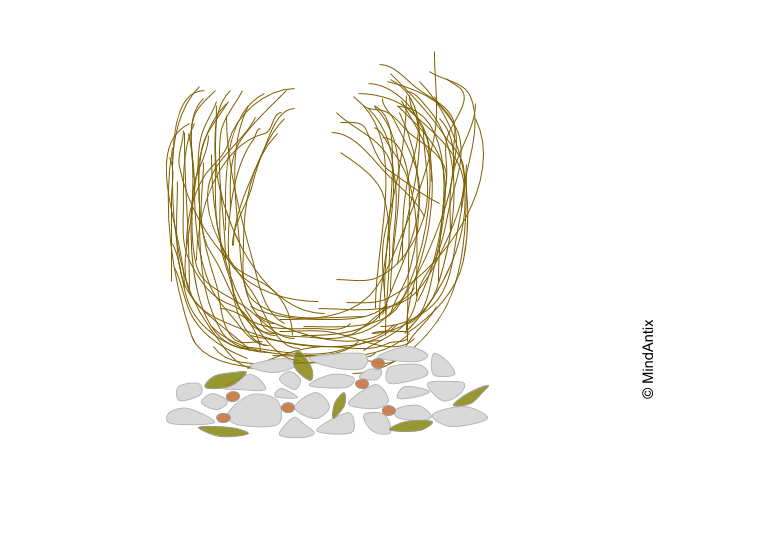Understanding how we, as humans, think and behave has always held fascination for scientists. Creativity – the ability to think of novel and useful ideas – is often considered a key trait that has allowed us to flourish as a species. Evolutionary biology dictates that traits beneficial to the species as a whole survive in the long term, while the less useful traits die down.
So, in what ways is creativity beneficial to us?
Research of innovation in other birds and animals provides clues that creativity evolved when brains developed more, and it provided distinct survival advantages.
One example found in nature is the bowerbird, one of nature’s creative engineers. Bowerbirds, found natively in Australia and New Guinea, have an interesting courtship and mating ritual. The male bowerbirds build elaborate structures called bowers from sticks and vegetation, and then decorate them with brightly colored objects like shells, stones, flowers or berries.
When scientists looked at the complexity of the bower, which indicates higher intelligence and creativity, and the brain size they found an interesting correlation. Bowerbird species that built more complex bowers also had a larger cerebellum volume.
Similar research on birds and primates confirm the hypothesis that more advanced brain structures developed to allow more complex cognition, which conferred evolutionary advantages. In a metastudy of birds and primates, researchers developed an innovation index by coding documented innovative behaviors and found that higher innovation levels correlated with larger brain sizes.
Two main aspects of cognition that have to work together to support adaptability are innovation and social learning.
Innovation
The ability to innovate plays a crucial role for a species in its survival. When faced with a new environment, species that are able to discover new food sources, avoid new predators or adapt to a different weather have significant advantages over those that don’t. One example of innovation in adapting to new foods comes from black rats that occupied the Jerusalem pine forests. The only source of food appropriate for the black rats in that area are pine seeds. The rats developed a technique to strip the pine cone to reach the seed, a behavior they had not previously used, which was critical for them to survive in the new habitat.
Social Learning
While discovering a new food source or developing a new tool to extract hard to reach foods can help an animal survive a new environment, the species as a whole can only benefit when animals can learn from each other. Using the earlier example of black rats, scientists found that black rat pups were able to learn the new pine stripping behavior from their mothers, while other adults were not always successful in learning through observation. This successful transmission of learning from mothers to their pups allowed the black rats to flourish in the new environment.
Our own history offers numerous examples of successful innovations that were exchanged and adopted by others. Our ability to think creatively and learn from others have allowed us to thrive in new environments. As one of the research studies summarized, “The combination of innovation with social learning, as documented in a number of primate species, is likely to be especially advantageous for species in novel habitats, as it could allow copying exploratory behavior per se as well as permitting the rapid transmission of successful strategies.”

